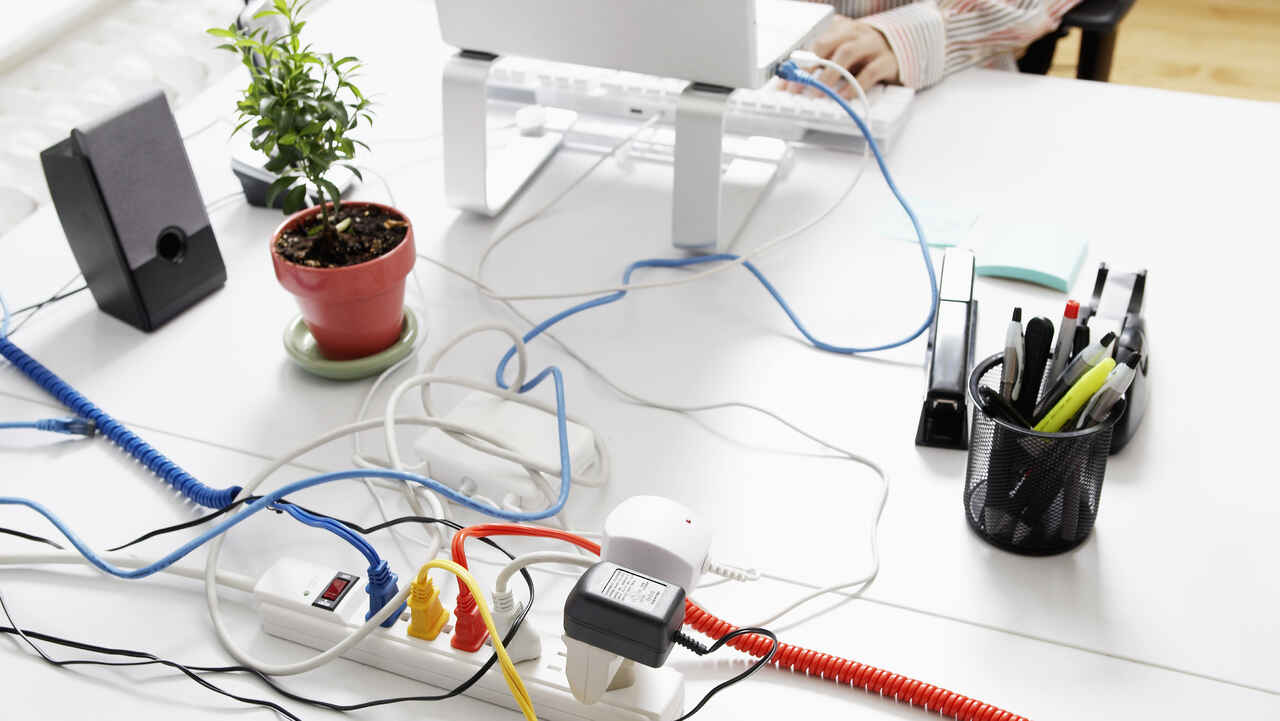 Be aware of these often-used items in your home that may cause burns or shock injuries.
Be aware of these often-used items in your home that may cause burns or shock injuries.
Hot ovens, candles and fireplaces aren’t the only burn hazards in your home. Faulty outlets, electrical cords and appliances can also cause burns. Fortunately, you can protect your family from serious injury by periodically checking the condition of household items that plug into electrical outlets and replacing damaged or malfunctioning products.
Touching an electrical current can cause first, second or third degree burns. The amount of time you’re exposed to the current and the strength of the current affect the severity of the injury. Burns might look minor, yet may cause serious damage to the muscles and tissue under the skin. Electrical shocks can also trigger seizures, alter the rhythm of your heart or even cause it to stop. Approximately 30,000 people are shocked by electricity every year and 5% of burn unit admissions are due to electrical injuries.
How safe are your outlets and extension cords?
You’re more likely to experience a shock or burn if you plug a device into an unsafe outlet.
An outlet may be unsafe if:
-
-
- It’s ungrounded. Ungrounded outlets contain two prongs instead of three. If a wire inside an appliance is loose or damaged when it’s plugged into an ungrounded appliance, you may be shocked, burned or even electrocuted. Ground wires inside outlets prevent shocks by channeling the extra electrical energy into the ground instead of your body. Outlets called ground fault circuit interrupters (GFCI) are a must for kitchens, bathrooms and laundry areas. The outlets shut off the power immediately if any changes in the current are detected.
- It’s broken. Damaged and broken outlets and light switch plates expose wires, making it more likely you’ll accidentally burn or shock yourself when you use the outlet or turn on a switch.
- It’s unprotected. Unprotected outlets are dangerous, especially if you have young children. Cover outlets with plug protectors or install tamper-resistant receptacles to prevent kids from inserting objects in outlets.
- It’s overloaded. When you have too many devices or appliances and not enough outlets, extension cords may seem to offer the perfect solution, but overloaded extension cords may overheat or short circuit, causing injuries or fire.
-
What about your appliances and chargers?
Problems are more likely to occur with older items but can happen with any appliance or charger due to damaged or outdated wiring.
If you notice any of these issues, your appliance or device may be unsafe:
-
-
- Tripped circuit breakers or outlets. If you need to reset the circuit breaker every time you use your dishwasher or mixer, it may be time to replace the appliance.
- Frayed cords. Is the cord on your hair dryer, iron, microwave oven or coffee maker frayed? Fraying exposes wiring, making it more likely that you’ll receive a shock if you accidentally touch the wires. The problem is particularly common with irons, heated blankets and hair styling tools, as it’s easy to damage the cords if you wrap them around the appliances.
- Hot cords or plugs. An electrical fault or loose wire may be to blame if the appliance cord or plug feels hot to the touch.
- Items that don’t meet U.S. safety standards. Knock-off cellphone chargers are one example of items that may not meet U.S. safety standards, increasing your burn risk. Use chargers made by your phone’s manufacturer and never use a cellphone connected to a charger when you’re in the bathtub or shower.
-
Making electrical safety a priority will help protect your home and will make it less likely you’ll experience burns or electrical shock, which can cause serious bodily injury.
Copyright 2020-2021 © Baldwin Publishing, Inc. All rights reserved.
Health eCooking® is a registered trademark of Baldwin Publishing, Inc. Cook eKitchen™ is a designated trademark of Baldwin Publishing, Inc. Any duplication or distribution of the information contained herein without the express approval of Baldwin Publishing, Inc. is strictly prohibited.
Date Last Reviewed: December 17, 2020
Editorial Review: Andrea Cohen, Editorial Director, Baldwin Publishing, Inc. Contact Editor
Medical Review: Perry Pitkow, MD
Learn more about Baldwin Publishing Inc. editorial policy, privacy policy, ADA compliance and sponsorship policy.
No information provided by Baldwin Publishing, Inc. in any article is a substitute for medical advice or treatment for any medical condition. Baldwin Publishing, Inc. strongly suggests that you use this information in consultation with your doctor or other health professional. Use or viewing of any Baldwin Publishing, Inc. article signifies your understanding and agreement to the disclaimer and acceptance of these terms of use.